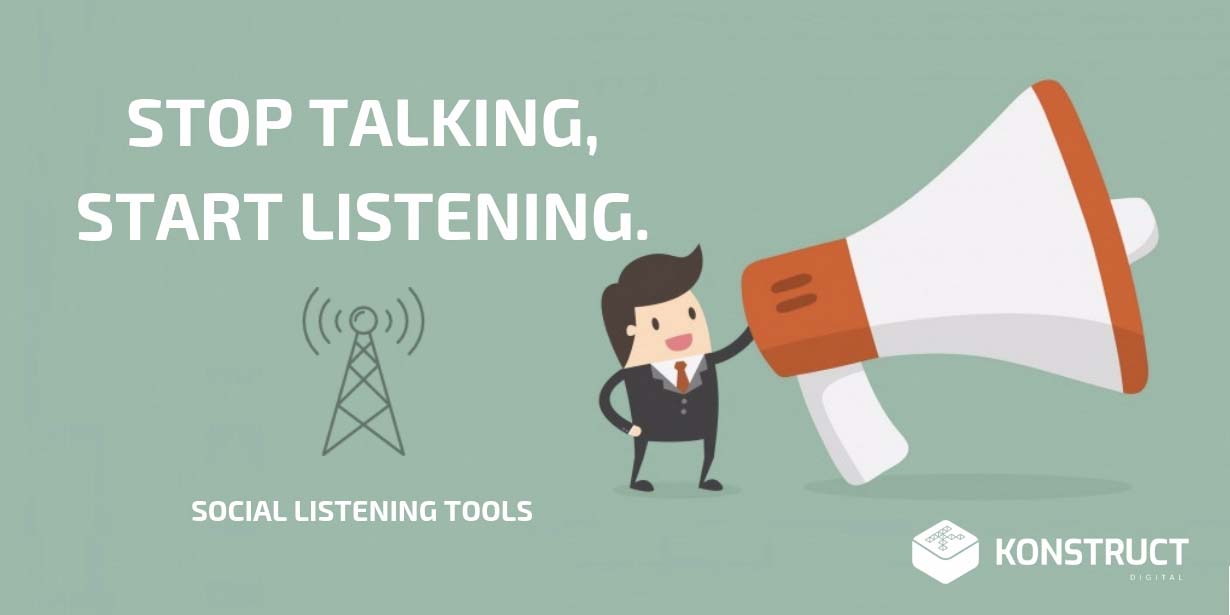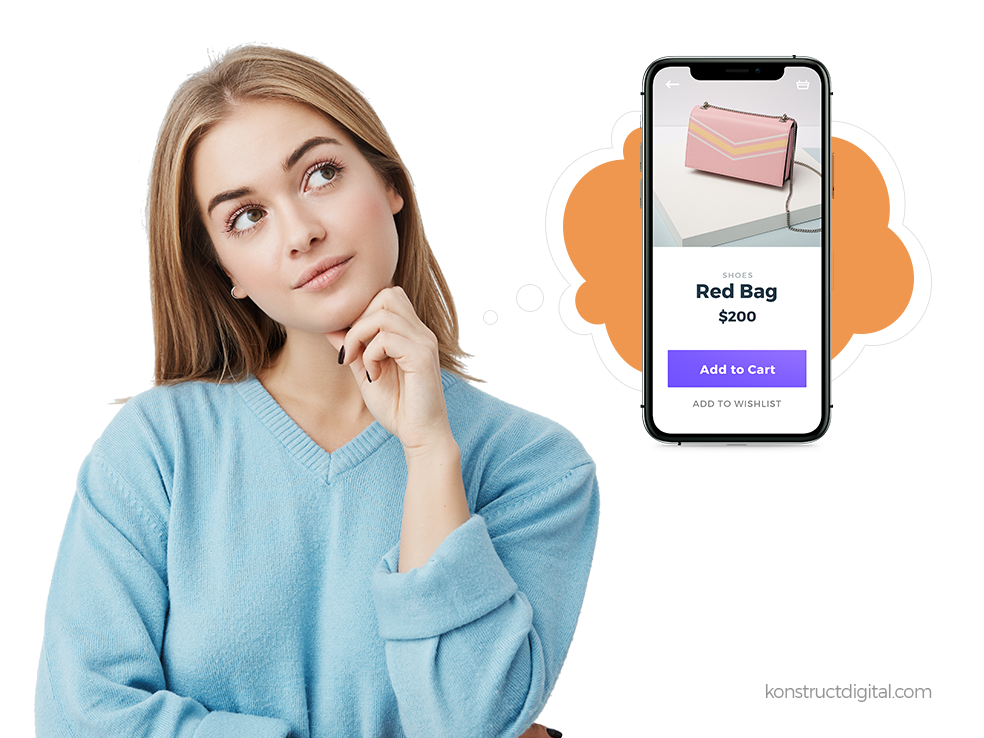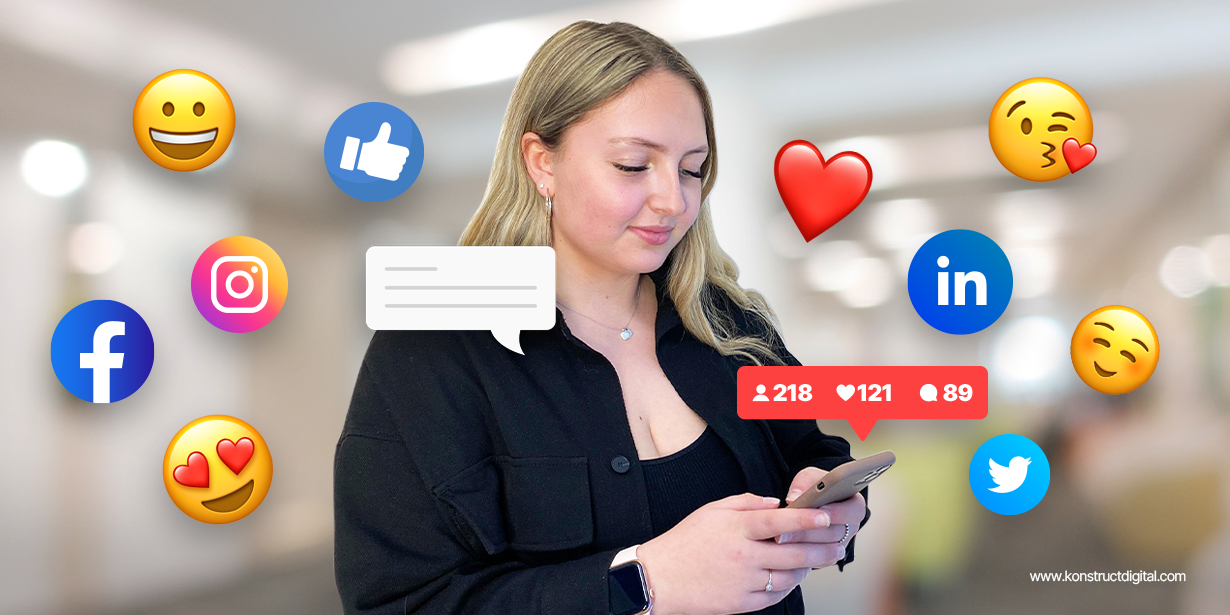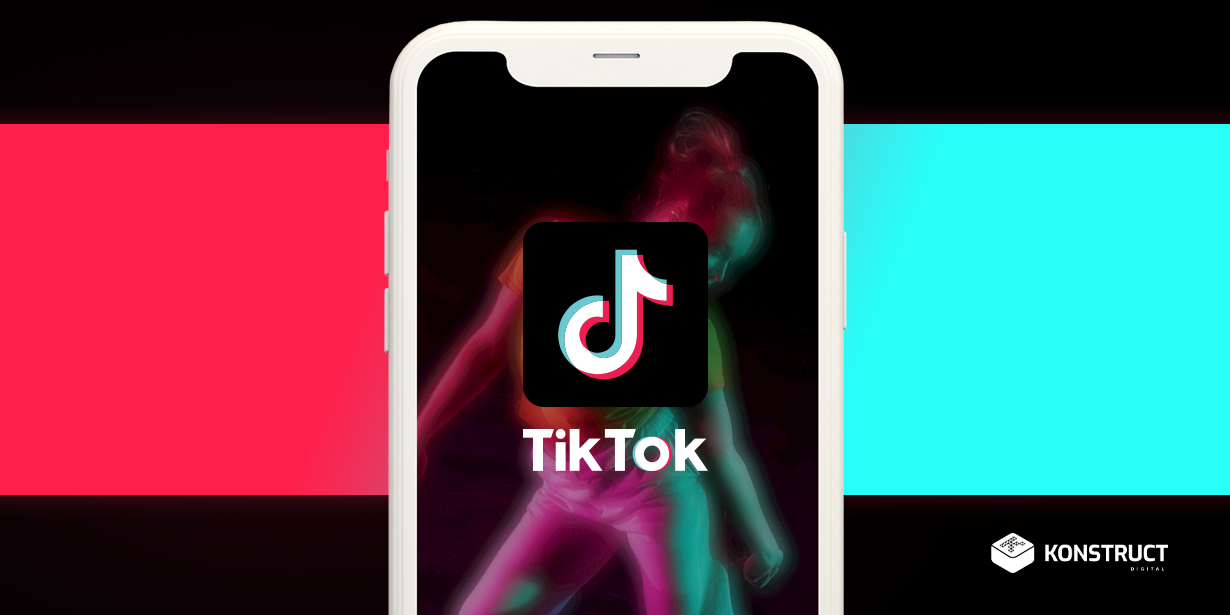If you’re looking to level up your B2B marketing game, persuasive copywriting is a must-have skill in your marketing strategy toolkit.
B2B copywriting is the art of crafting messages that speak directly to the pain points and desires of your target audience, convincing them that your product or service is the best choice for their business needs. Or even more importantly, the best way to free up their time to focus on other priorities, reduce the annoyances in their day-to-day, and get ahead in their careers—because these are the kinds of things that B2B buyers are really concerned with at the end of the day!
In the competitive world of B2B marketing, the ability to write persuasive copy can be the difference between closing the deal and losing out to the competition.
Persuasive copywriting requires a mastery of language and storytelling techniques that can captivate your readers and compel them to take action through the different stages of the sales funnel. If you’re able to master this skill, you can establish trust and credibility with your target audience, generate awareness, build relationships, and ultimately drive conversions and revenue to fuel your business growth.
That’s why it’s essential to master the key elements of B2B marketing copywriting, from harnessing a deep understanding of your audience’s pain points to crafting a compelling value proposition and leveraging social proof and authority to build trust with your target audience.
If you need some inspiration on how to successfully craft compelling copy for your business audience, then look no further!
In this blog post, we’ll explore some of the essential elements of persuasive B2B marketing copywriting and provide tips and industry insights to help you take your writing to the next level.
If you want to uncover the keys to writing persuasive B2B copy that can close deals and boost conversions and revenue for your business, keep on reading!
The Differences Between Writing B2B and B2C Copy
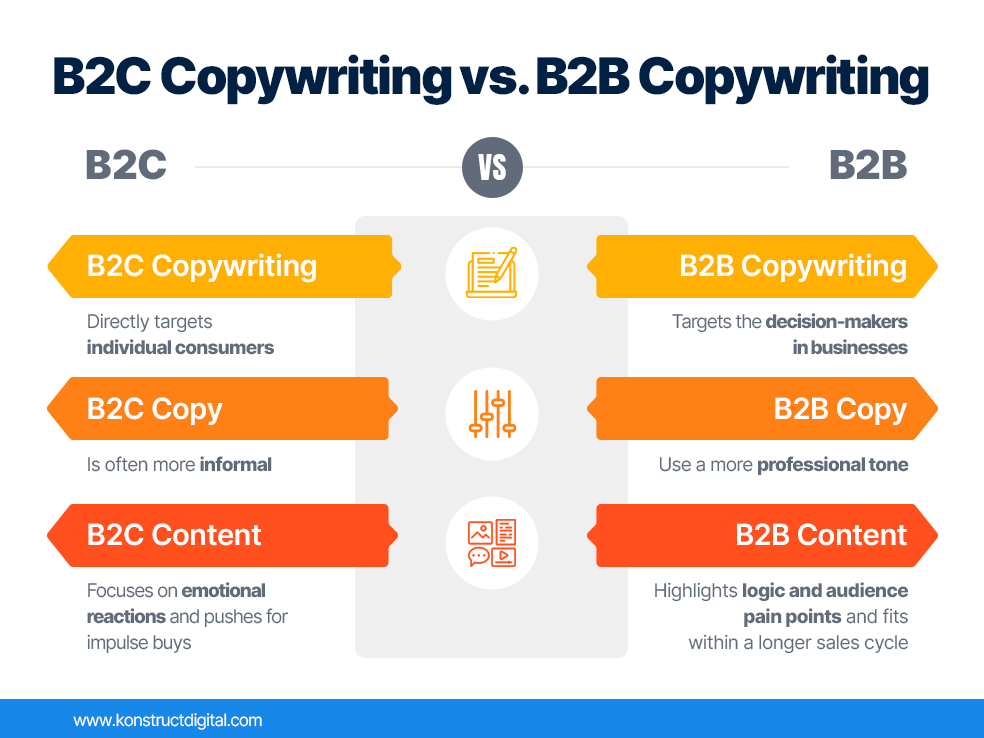
B2C and B2B copywriting differ significantly in their focus, tone, and style.
Writing copy for B2C involves targeting individual consumers and B2C copy is typically more aspirational in nature. It often employs vivid imagery, catchy slogans, and relatable storytelling to create an emotional connection with potential buyers and push them toward an impulse purchase.
B2B copywriting, on the other hand, targets the key decision-makers in businesses and seeks to address the specific pain points and needs of these individuals and their businesses. The tone is often more formal and professional, but it doesn’t always need to be, depending on your brand and target audience.
B2B copywriting typically seeks to build trust and credibility with the audience. It is less concerned with creating an emotional connection and more focused on demonstrating the value of the offering in a clear and convincing way.
Ultimately, B2C and B2B marketing copywriting are different in their purpose and style, reflecting the unique needs and motivations of their respective audiences.
Tips for Writing Compelling B2B Copy
So let’s jump into it. Here are ten tips for writing more persuasive copy for B2B businesses.
1. Brand Voice, Brand Voice, Brand Voice
When crafting copy for your B2B business, we can’t stress the importance of your brand’s voice enough.
A strong brand voice is the glue that holds your message together and makes it sing to your audience.
As a B2B company, you may have complex products or services that require a high degree of expertise. That’s why a clear brand voice is crucial in helping you cut through the jargon and help your audience make sense of how your brand stands out from the competition and is uniquely qualified to solve their challenges.
Not to mention, it can also be the secret sauce that establishes your credibility and thought leadership in your industry.
So, if you want to create content that speaks directly to your target audience and sets your brand apart from the competition, make sure your brand voice is loud and proud. Because when it comes to B2B marketing, a strong brand voice is key to establishing trust and credibility with other businesses and building lasting relationships with your target audience.
2. Balance UX and SEO
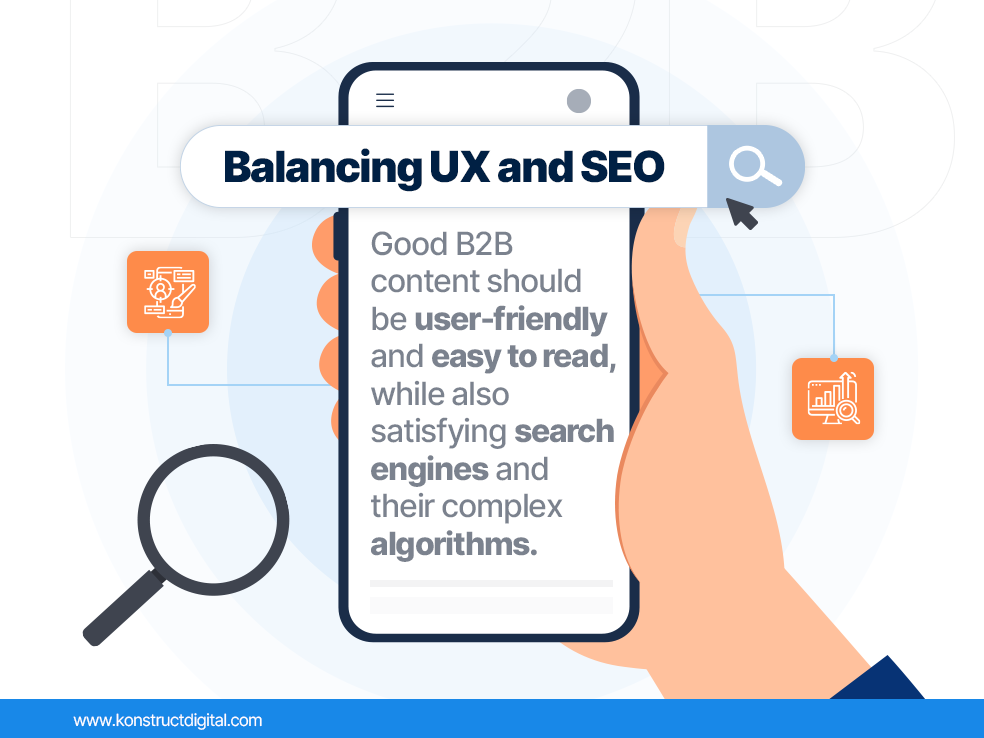
When it comes to creating fantastic website copy, you need to find the perfect balance of SEO and user experience.
Think of it this way. If you had a car, SEO would be the engine that drives it. Just like a car needs a good engine to get you where you need to go, a website needs good SEO to rank well in search engines. In the same vein, well-executed web copy makes for a far better user experience on your site, much like the design, comfort, and finishing touches of a car make it pleasurable to drive.
While SEO copywriting targets search engines to attract organic search traffic to your site, UX copywriting targets your website’s visitors to keep them there. So, SEO and UX need to be in sync to maximize the effectiveness of your content marketing efforts.
It’s no use having brilliant SEO to lure your customers to your site if they’re going to have a negative experience once they get there. A bad user experience will ultimately translate to a high bounce rate and limited, if any, conversions.
Of course, when it comes to SEO, you can’t just toss in a bunch of keywords and call it a day, you need to provide a good user experience to make your website user-friendly and impress picky search engine bots. Search engines love speedy sites with an organized structure, descriptive headings, and optimized web page titles just as much as users do!
Don’t forget that the best SEO B2B copywriting doesn’t read like it’s written with search engines in mind.
The key is to craft your B2B copywriting so that it speaks to your audience, flows nicely, and offers valuable information. If you can nail these things, you’ll be raking in the traffic, leads, and conversions without breaking a sweat.
3. Use Catchy Headings That Make Readers Excited to Learn More
When it comes to B2B copywriting, you’ve got a nanosecond to grab your reader’s attention. So, how can you do this?
Catchy headings are a powerful tool in B2B marketing copywriting, as they have the ability to instantly capture your reader’s attention and draw them into your content.
Can you remember the last time you read an entire piece of content end-to-end? Probably not. So, your headings also need to tell enough of the story so readers can understand what you’re offering and why they should care.
And while you’re at it, sprinkle in some relevant keywords to boost your search engine rankings. But don’t overdo it–nobody likes a keyword-stuffed headline that reads like it was written by a robot.
When crafting catchy headings, you need to strike the right balance between being engaging and informative, while also incorporating relevant keywords.
With a well-crafted heading, you can set the tone for your entire piece of content and leave a lasting impression on your readers.
4. Speak Directly to Your Audience (It’s About Them, Not You!)
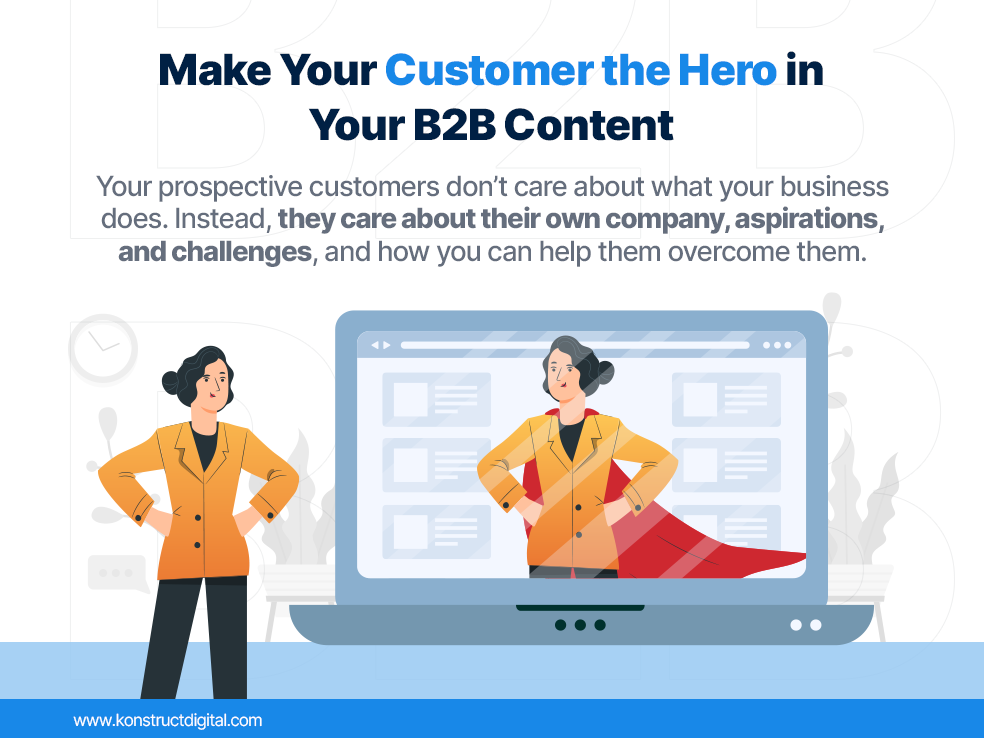
When it comes to writing for your B2B customers, you need to put them front and centre.
Forget about boasting about your own business—your readers don’t care about that. What they care about is their own company, their goals, and the challenges they face.
Sure, you might be tempted to list off all the impressive features of your products or services. But unless you can translate those features into tangible benefits for your reader’s business, you’re not going to get very far. (More on this later!)
Basically, if you ever feel compelled to write a headline that says your business is “#1” in your industry, don’t!
A B2B buyer couldn’t care less about how long you’ve been around. What they want to know is how your product can solve their specific problems and make their lives easier.
So, when you’re crafting your B2B copy, focus on connecting with your audience over their problems or goals. Speak to their needs and desires, and show them how your product can offer them real solutions. Trust us, they’ll be much more likely to stick around and listen (and make a purchase!).
5. Add Persuasive CTAs Throughout Your Content
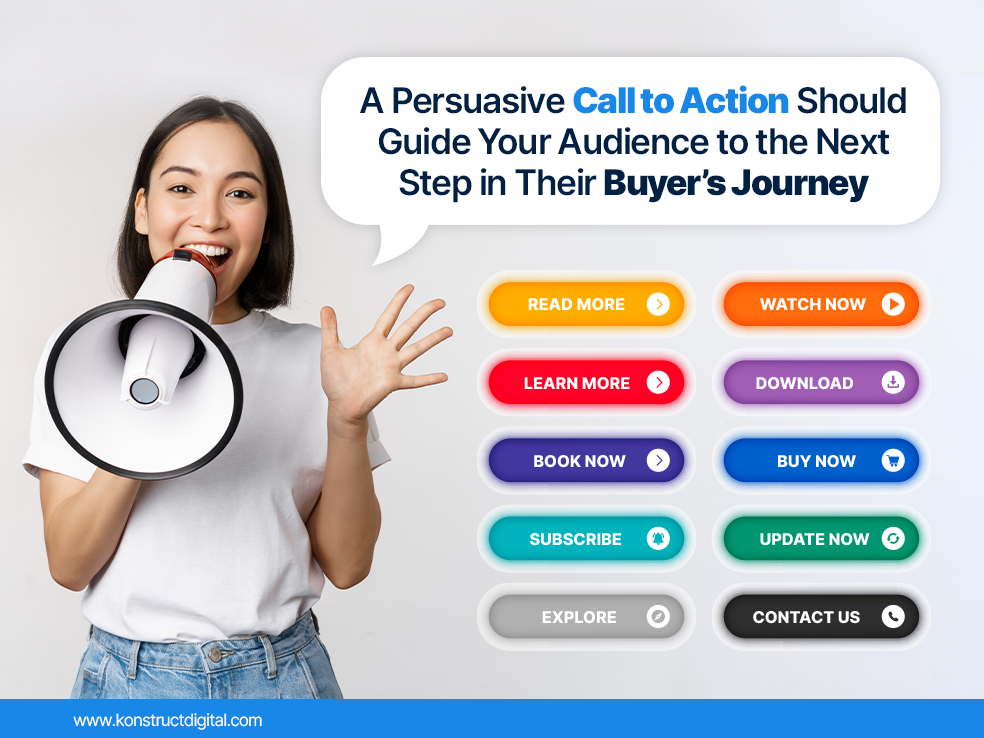
Your B2B copy is like a sherpa guiding your audience through the treacherous terrain of their buying journey.
Once you’ve dazzled them with your persuasive prose and sparked their interest, it’s time to lead them to the promised land with a rock-solid call to action.
Whether it’s enticing them to click through to additional resources or tempting them to reach out to your team, a strategically placed CTA is your golden ticket to guide your audience toward the next step in their buyer’s journey.
Pro tip: include multiple CTAs on each landing page which can speak to the different stages of the buying journey. For example, “Check out our blog to learn from industry experts” speaks to readers more at the beginning of their purchasing journey whereas “Get a free quote today” speaks to bottom-of-funnel audiences ready to convert.
And, when your audience is hooked on what you have to say and has a clear idea of how your business is the solution to their unique challenges, they’ll be more than willing to take that next step towards success, no matter where they are in the funnel.
6. Discuss the Emotions Behind Each Pain Point
As humans, we’re wired to avoid pain like it’s a root canal on a Monday morning.
That’s why tapping into pain points and the emotions that come with them is a powerful way to make your B2B marketing copywriting more persuasive.
Let’s say you’re selling a productivity solution that could revolutionize your buyer’s business. You could start by asking “Don’t you hate wasting time on x, y, and z?” and watch as your reader nods along in agreement. Then, swoop in with a great example of how your product or service can solve those productivity issues and make their life a whole lot easier.
But, don’t forget that happy emotions can be just as powerful. By painting a picture of the euphoria that comes with reaching a goal, you can motivate your reader to take that first step towards success by reaching out to your team.
7. Talk About Benefits Rather Than Features
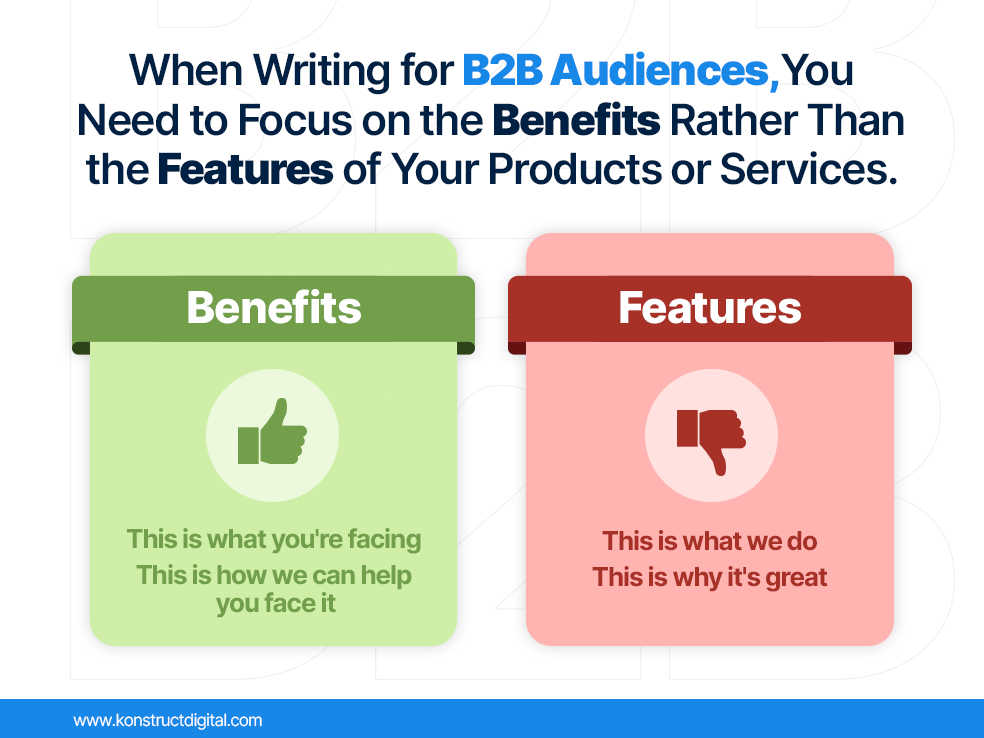
Your products may be loaded with impressive features, but that’s not enough to win over your audience. It’s like serving up a plate of raw ingredients and expecting your guests to be satisfied. Sure, it might be healthy, but where’s the flavour?
With a little finesse, some extra herbs and spices, and a bit of heat, you can turn that bland plate of ingredients into a mouth-watering meal. Similarly, by focusing on the incredible benefits of your product or service, you can transform your content from meh to magnificent and something your audience will want to devour.
While features may be important to include on your landing pages, your potential customers don’t just want to know what your product does. They want to know how it can benefit them and their business. So, be sure to put those benefits on display at the forefront of your page.
When it comes to B2B, you likely need to convince multiple decision-makers, often including c-suite executives who don’t have time to figure out how your product will solve their problems. So, tell it to them straight rather than making them figure it out for themselves.
Because if you don’t directly state how your product or service offerings will resolve their challenges and help them grow their business, they’ll move on to your competitors who do.
8. Fake News is Everywhere. Prove Yourself with Social Proof.
When it comes to B2B marketing, trust, and credibility are the bread and butter of success.
B2B buyers want to form long-term relationships with companies that can deliver high-quality products and services consistently. So, if you can’t convince them that you’re the real deal, they’ll take their business elsewhere.
One of the best ways to build trust and credibility with your potential customers is through social proof. Testimonials, case studies, and reviews can demonstrate your true value and build confidence in your brand.
It’s always better to have other reputable business leaders talk about why your company is great than say it yourself.
Real-life case studies can show how your business has helped solve other customers’ challenges and relate to what your prospects are experiencing. It’s like having a renowned food critic rave about your cooking skills; it can have a huge impact on your potential customer’s buying decisions.
9. Don’t Include Unnecessary Jargon
The use of jargon is not necessarily always a bad thing in B2B marketing copywriting. However, it’s important to know when to use it and what types of audiences will be receptive to it.
The key to writing effective copy for B2B audiences is to understand your target audience and use language that is easily understood and relatable to them.
If your audience can’t comprehend what you’re saying, you risk losing their interest and alienating them.
This doesn’t mean that you should completely avoid industry-specific terminology, as it can demonstrate your expertise to an audience that is savvy with industry-related terms. But you should keep in mind that B2B decision-makers are busy and don’t have time to sift through technical jargon they don’t understand.
It’s always best to use simple, straightforward language that is easy for your potential customers to understand and remember. By doing so, you can better connect with and engage your audience, ultimately leading to greater success in your B2B marketing efforts.
10. Ditch Generalizations for Specificity
To remain true to your brand and attract quality leads, you need to deliver focused, specific content that resonates with your target audience at every turn.
Avoid generic statements or vague references and instead focus on delivering focused, specific content that reinforces your brand’s overarching voice and message.
If your content is too general or vague, it can come across as impersonal and doesn’t show your audience how you understand their pain points or can solve their specific challenges.
So for example, if you have a productivity-enhancing tool, don’t just say your products can help “increase efficiency.” Instead, tell your audience how they can “complete X task 10 times faster so they can free up more time for Y.”
In today’s competitive landscape, consumers have many options to choose from, so it’s important to differentiate yourself by providing content that is valuable, informative, and tailored to their unique needs.
With the right approach, your content can help you connect with your audience, build trust, attract leads, and ultimately help drive business growth.
Improve Your B2B Marketing Copywriting with the Help of Expert Copywriters
Not only is great copywriting for B2B time-consuming, but it also takes practice and solid copywriting skills.
If the thought of crafting persuasive copy makes you break out in a cold sweat, consider outsourcing your copywriting projects to a trusted content marketing agency like Kontruct Digital.
Our team of experienced B2B copywriters understands the unique needs and language required to market to B2B audiences. We will develop a content strategy that aligns with your business goals and ensures that your messaging is consistent and effective across all channels. We’ll analyze your current website content, and create compelling B2B digital marketing content that will boost your leads, sales, and traffic.
So, what are you waiting for? Schedule a free, no-obligation consultation and let’s get started on taking your content marketing efforts to the next level.



